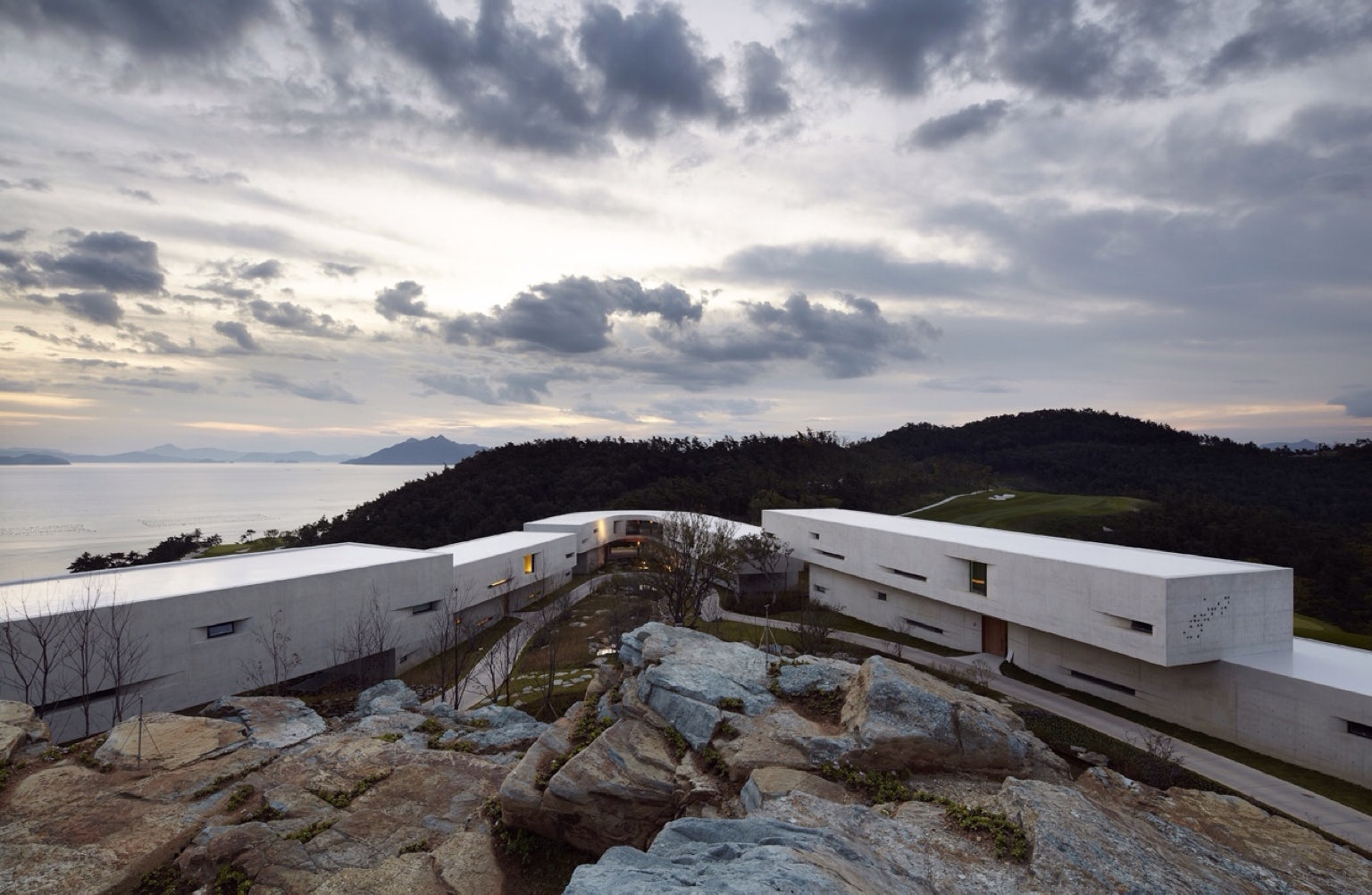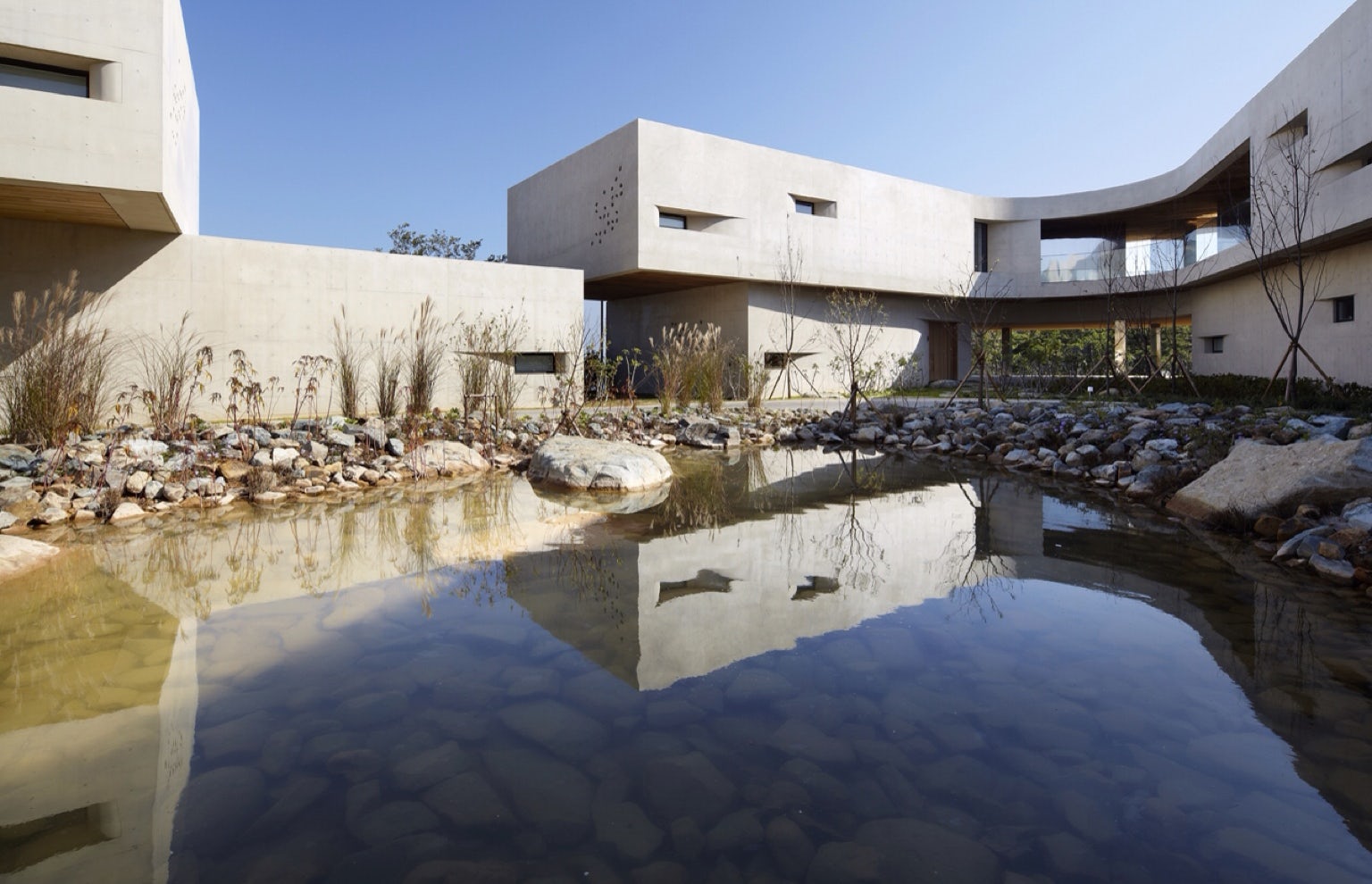Today, concrete reigns supreme. While this versatile material can be found prolifically throughout history, the 21st century has cemented concrete’s place as the world’s most widely used man-made material. As we respond to the evolving nature of our cities, landscapes, and construction methods, how can we create new forms and uses for this widespread material? Continuing the thread grounded in our previous features on concrete façades, including Portugal and Japan, we’ve rounded up a collection of unique structures sited in South Korea. With distinct environmental conditions and building techniques, South Korean architecture has begun reimagining standard concrete applications. Whether forming dramatic cantilevers, unexpected façade textures, or new rhythmic patterns, modern Korean concrete façades are both unconventional and insightful.
While they are atypical, unorthodox, and endearingly rare, the following seven buildings explore South Korea’s emerging design culture and conceptual design approaches. With innovative spatial arrangements and material combinations, the structures are drawn across various scales, typologies, and contexts. Examining the human experience of envelopes and transitions, each project establishes real and perceived boundaries between interior and exterior space. Just as concrete’s character changes based on its aggregates, these South Korean projects begin to express the country’s architectural, social, and cultural values through the lens of local sites.

© Studio Gaon

© Studio Gaon
House of Respect and Happiness by Studio Gaon, Gapyeong-gun, South Korea
Positioned along the mountainside, this project is located on a quiet, tranquil site. The clients asked for the project to be named the “House of Respect and Happiness,” and that it be a space for education, interaction, and exchange. Separated functions were designed to “lean on each other” and play on the dualities of temperature and soft or hard surfaces.

© JMY architects

© JMY architects
[5X17] Daecheong-dong Small House by JMY architects, Busan, South Korea
JMY’s project explores the possibilities of suburb housing. Very clean, simple lines and planes form the interior, while the exterior is expressed as simple rectilinear volumes. Making use of the narrow site, the project was designed to create expanded living spaces, interesting vertical circulation, and promote urban leisure activities.

© BCHO Architects Associates

© BCHO Architects Associates
Camerata Music Space by BCHO Architects Associates, Beopheung-ri, Tanhyun-myeon, South Korea
The Camerata Music Space joins two distinct programs; the music listening spaces doubles as a residence for a small family. Positioned on a sloping hill, the project is located in a suburb of Seoul and was designed with special regard to Montana’s barn typology from the United States. The studio was created to open to the general public and “whoever loves music.”

© Yoon Joon-hwan

© Yoon Joon-hwan
Inbo Catholic Church by Archigroup MA, Ulsan, South Korea
Harmonizing with the small scale of its surrounding rural town, the Inbo Catholic Church includes worship space, an office, service facilities, and a priest’s room. Designed to become a symbolic center of the village, the church has a steep roof as well as a common open yard. Stairs, walls, and ramps were formed to provide a sense of continuity throughout the project.

© himma studio

© himma studio
House of Open Books by himma studio, Paju-si, South Korea
Appearing as a volume of books, this project is sited in Paju Book City, an area with various publishing houses. The concept involved two parallel lines, or languages, seemingly converging at a single point. Diverse interiors are formed between the building sections with ramps, folded walls, and an artificial landscape.

© BCHO Architects Associates

© BCHO Architects Associates
Namhae Southcape Linear Suite Hotel by BCHO Architects Associates, Namhae-gun, South Korea
BCHO’s hotel was designed as part of a large peninsula master plan. Located on harsh terrain between the sea and mountains, the project includes 49 units and resort space. Challenging conventional hotel building standards where buildings are one large mass, the project was divided and adapted to the site along its topography.

© NAMELESS Architecture

© NAMELESS Architecture
RW Concrete Church by NAMELESS Architecture, Seoul, South Korea
Located in Byeollae, near Seoul, the RW Concrete Church creates dramatic formal relationships and cantilevered spaces. Consecutive rooms were designed through simple shapes and programs. Concrete was used as a metaphor for religious values and solidity, as well as “grasping the gravity of the ground” the church stands on. An empty concrete yard serves as a venue for community interaction at the building’s base.









